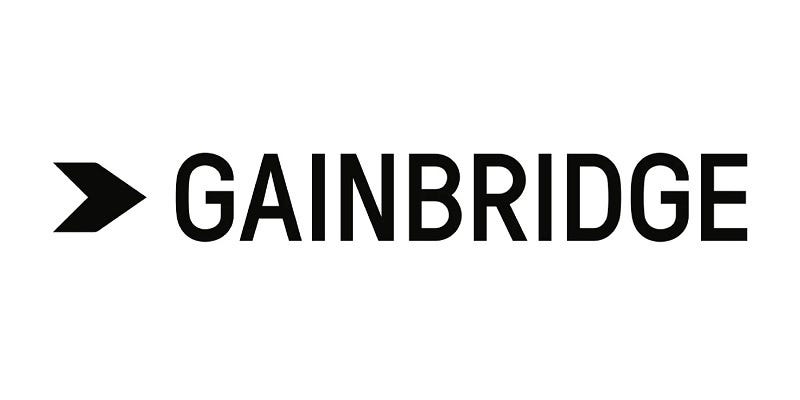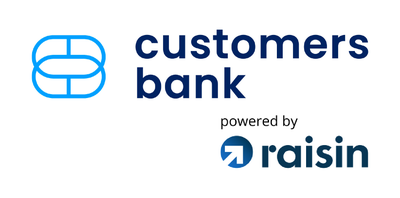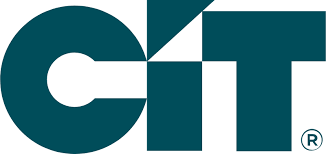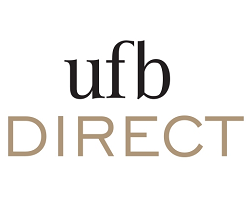How to budget: Tips, tools, and techniques
13 min readHow to budget: Tips, tools, and techniques

Our experts answer readers’ banking questions and write unbiased product reviews (here’s how we assess banking products). In some cases, we receive a commission from our partners; however, our opinions are our own. Terms apply to offers listed on this page.
- A budget can help you stay on top of expenses, pay off debts, and achieve your financial goals.
- There are several strategies for budgeting. Each has its own unique pros and cons.
- Checking in on your budget, adjusting it, and analyzing your spending habits regularly is critical.
A budget is, at its simplest, a plan for how you’ll spend your earnings. It ensures you have the funds to cover your essentials — like housing, groceries, utilities, and your monthly debt payments — while also working toward other financial and savings goals.
In short: Budgets allow you to get the most out of your paycheck. Without one, there’s a chance you could run out of money before your next pay date.
How to budget your money
Budgeting is critical if you want to stay on top of bills, pay off debts, or save for the future, and there are several ways to go about it.
“Building a budget doesn’t have to be overly complicated or time-consuming,” says Brittany Castro, former in-house CFP for Mint. “It’s actually the first step in putting yourself in control of your finances because it means you know where your money goes each month.”
How to plan a budget
Budgeting as a beginner can be daunting. Use these steps when making a personal finance budget for the first time:
- Examine your income and expenses so that you can understand how much you’re making, how much you’re using, and if you’re spending more than you’re making
- Choose your approach to budgeting, such as the 50/30/20 rule or the envelope system, when determining how much to save each month
- Figure out where you can cut back on spending — and make strategies to help you stick to those cutbacks
- Automate your savings and investments so you can continue to make money off of your extra income without too much effort
- Find ways of tracking your budgeting process that work for you, such as using budgeting apps and/or creating a budgeting spreadsheet
1. Examine your income
To start budgeting, you first need a good pulse on your monthly income — more specifically, how much you take home each after taxes. If you’re unsure what your net income (your income after taxes) looks like off the top of your head, you can typically use pay stubs or bank statements to get these numbers.
Once you have your income estimated, you’ll also need to estimate your monthly expenses — things like your rent or mortgage, utility costs, groceries, insurance, and gas. If you have debts (like credit cards or personal loans), add these in as well. Then compare the two numbers.
“If your expected expenses are greater than your expected income, you will need to earn additional income, cut out some purchases, go into debt, or do a combination of these three,” says Todd Christensen, an accredited financial counselor and education manager at Money Fit.
If your income outweighs your expenses, though, that means you have extra cash to put in savings, add to an emergency fund, or put toward other financial goals.
2. Choose your budgeting strategy
The next step is to create your budget — a specific plan for how you’ll use your earnings each month and eventually achieve your financial goals.
There are several strategies for doing this, each with its own pros and cons. Here are a few of the options you might consider:
50/30/20 rule
According to Christensen, the 50/30/20 rule has become increasingly popular in the last 20 years. “It suggests you live on 50% of your income — housing, transportation, cell phone, utilities — enjoy 30% with dining out, recreation, or travel, and save and invest 20%.”
The benefit here is that it’s a simple, easy-to-learn approach, and it doesn’t force you to account for every single purchase or expenditure. On the downside, it doesn’t take into account your circumstances and may not work in every scenario. (If you live in a high-cost housing market, for example, adhering to that 50% rule may be unrealistic.)
70/20/10 rule
The 70/20/10 rule is similar to the 50/30/20 rule in that it has a loose budgeting structure. The categories for this budgeting strategy are: 70% goes to wants and needs, 20% goes toward savings and investments, and 10% goes toward debt payments or donations.
Zero-balance or traditional budget
With a zero-balance budget, you’re trying to get your income minus your expenses to equal zero. That means you use all your income each month — first, toward your essentials, and then, toward your wants and financial goals. Under this strategy, if you were to find yourself with an unspent $300 at the end of the month, you’d put that money in savings, make an extra loan payment, or make some other use of it.
The advantage of a zero-balance budget is that it accounts for every dollar, ensuring you make the absolute most of your earnings. The main drawback is that it’s time-consuming. Tracking each expenditure and every dollar you earn can be tiresome. It’s also difficult to use on unpredictable incomes (you never know how much you can allot for each expense).
Pay yourself first budget
The pay yourself first strategy starts with your financial goals and works backward. So, say you know you want to put $500 toward your mortgage and $500 into savings each month. You’d start by subtracting that $1,000 from your monthly take-home pay (for example, $4,000 – $1,000), and then use that number ($3,000) for your monthly bills and expenses.
This strategy’s big perk is that it prioritizes your goals and allows flexibility in spending. On the downside, it may create stress if you leave yourself with too little to cover your monthly costs.
The envelope budget
The envelope system is a monthly budgeting method created by financial author Dave Ramsey. It requires putting cash into individual envelopes for each expense or category of expenses (e.g., housing, utilities, food, and entertainment). You then pull cash out of the envelopes as costs arise during the month.
If you run out of money in an envelope, it’s a sign you overspent or need to allot more to that category. If you have lots left over, you can adjust the budget for the next month and put those funds elsewhere.
The benefit of this method is that it’s visual and tangible, making it easy to understand your budget and how you can improve it. Unfortunately, it’s also time-consuming, and cash isn’t always accepted — especially in today’s digital economy.
3. Reduce spending
While you go about creating a budget, it’s important to fully analyze your expenses. You should ask yourself: Are those expenses necessary? If so, are there ways to reduce them or make them more affordable? This might mean renegotiating your pricing, switching service providers, or looking for coupons or special deals.
Here are some budgeting tips to cut down what you spend:
- Increase friction: Friction is when something like spending money becomes a little more difficult. An example of adding friction when spending would be removing your saved credit card information from your favorite site so that you have to manually re-add it in every time. This is a great way to make it harder for you to spend easily.
- Wait before buying something: Set a 48-hour waiting rule for your purchases. If there’s something you’d like to buy, sleep on it. If it still seems like a good idea in two days, then make the purchase. This helps you steer clear of unnecessary impulse buys.
- Audit your monthly subscription services: There are so many subscription services these days, and it’s easy to lose track of just how much you’re spending. Take a hard look at your subscriptions and consider cutting any you’re not actively using. Look at streaming services, apps, subscription boxes, and even Subscribe and Save subscriptions on Amazon.
- Refinance any loans to get lower rates: You’ll be surprised how much interest adds up on any loans you have. Refinancing your mortgage, car loan, and sometimes even your student loans could reduce your interest rate, monthly payment, or both, freeing up cash flow that you can put toward your budget for other, more important, expenses. Make sure to shop around with several lenders if you’re considering this route.
- Meal plan: Planning your meals ahead of time helps you stay on track at the grocery store and avoid eating out in a pinch. You’ll want a plan for every day of the week, including breakfasts, lunches, dinners, and snacks.
Cutting back even slightly could free up more cash for paying down debts, achieving your financial goals, or just reducing overall financial stress.
4. Automate savings and investments
No matter which budgeting method you choose, it’s important to make saving a part of your plan. Typically, the best option is an automated deposit into your savings account, as this reduces hassle and keeps your goals on track. To maximize your savings, you might consider a high-yield savings account, which earns money at a higher rate than other options.
Once you’ve automated your savings, you can also think about investing any income you might have left over. If this is something you’re interested in, consider talking to a certified financial planner before diving in. They can help you choose the best investments for your goals.
5. Track your progress
Budgets are ever-evolving tools, and you’ll need to track your progress, adjust, and recalibrate often — especially in the beginning. You’ll also need to adjust your spending habits as you go.
“The key is to identify your spending trends and ensure they match up with your spending priorities,” Christensen says. “If you’re spending $50 a week on soft drinks, but you would rather prioritize the purchase of a new gaming console, then it’s time to change your soft-drink purchasing behavior.”
Though you can certainly manually check in on your budget, Christensen recommends using a budgeting app that connects to your bank account, as these can streamline the process. For example, Rocket Money is an app that helps you create a budget, negotiate your bills, and reduce your spending — and it has a free plan.
Some budgeting apps offer credit monitoring services, as well. Consider tracking your credit score and credit card use when you’re tracking your budget to better understand all of your financial needs.
You can also create an expense tracking spreadsheet in Excel, ask for receipts for every purchase, and total them up at the end of each week or month.
How to budget on a low income
If you’re struggling financially, budgeting is particularly important. As Lisa Fischer, chief growth and lending officer at Mission Lane, explains, “Keeping a close eye on spending is crucial for all consumers, but especially those who may be living paycheck to paycheck.”
Not only can budgeting help you monitor your spending habits and stay on track with bills and expenses, but it can also ensure you prioritize saving, which should improve your financial outlook down the line.
In addition to budgeting, you can consider applying for rental or housing payment assistance, food pantries, and health care sharing plans to reduce your costs. Financial, debt, or credit counseling might be helpful as well. If this is something you’re interested in, the nonprofit National Foundation for Credit Counseling is a good place to start.
Why is budgeting important?
If you want to make the most of your income while also achieving your long-term financial goals, having a budget is crucial. As Castro explains, “You need a solid budget and financial plan in order to set yourself up for long-term financial wellness, avoid running into problems such as racking up credit card debt, and build your net worth over time.”
There are many ways to go about budgeting, and you may need to try a few before you find the right fit. You can also speak to a financial advisor for help choosing the best budgeting route for your household.
How to budget: FAQs
The best way to start a budget is to figure out how much you’re making and compare it to what you’re spending. Then you can figure out what budgeting method you want to use.
Cash stuffing is a budgeting technique that involves assigning monthly spending and saving categories to different envelopes. Then you put the amount of money you want to spend on those categories into the envelopes.
The 50/30/20 rule is a budgeting technique in which you assign 50% of your income to living expenses (such as rent and utilities), 30% of your income to non-necessary expenses (such as concerts or travel), and 20% to savings and investments.


Discover more from Slow Travel News
Subscribe to get the latest posts sent to your email.






